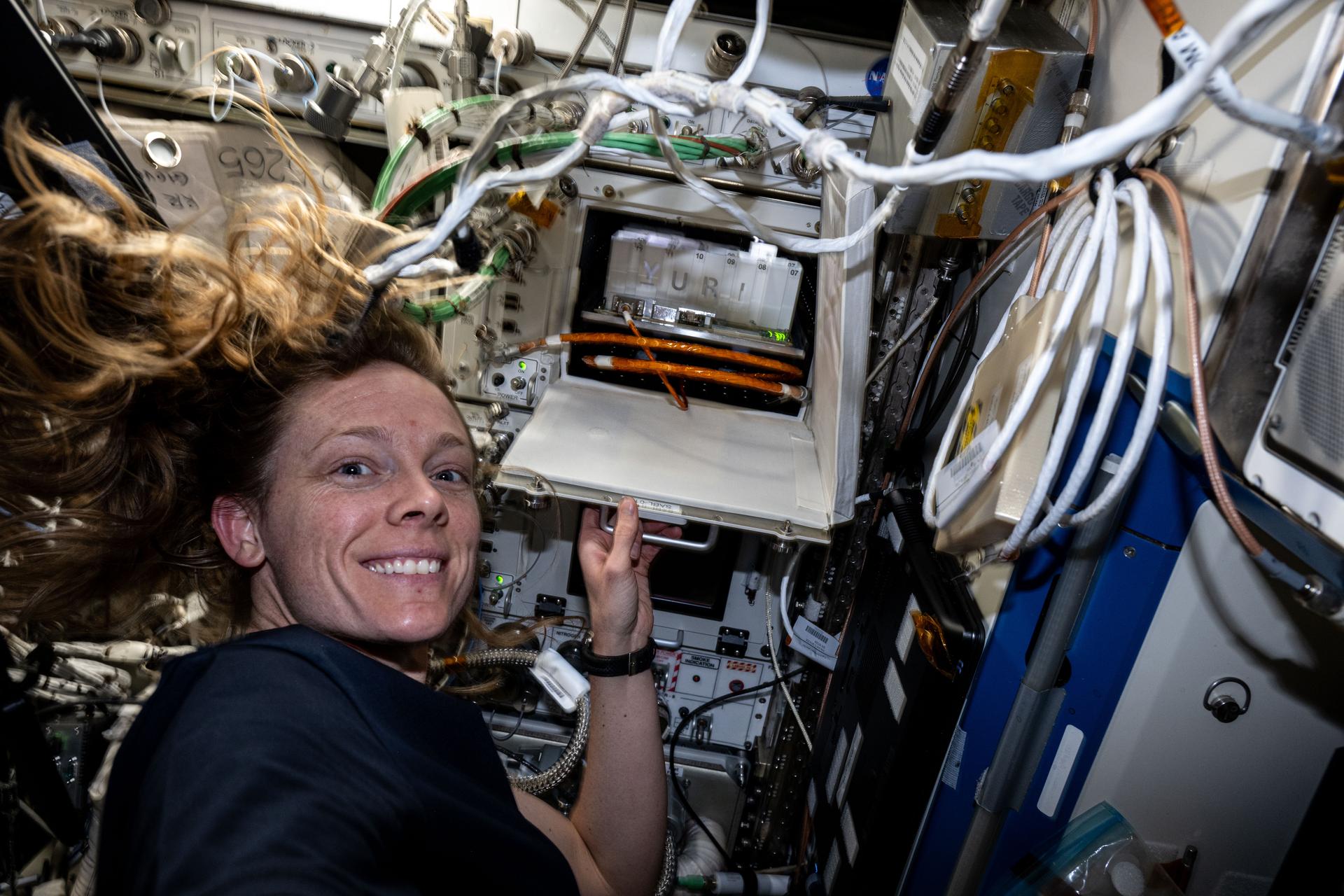
29 Apr 2025
The Expedition 73 crew is learning how to manufacture nanomaterials today possibly leading to new therapeutics, vaccines, and regenerative medicine. The orbital residents also conducted vein scans and wrapped a cellular gravity sensing experiment aboard the International Space Station.
NASA Flight Engineers Anne McClain and Jonny Kim began their day inside the Kibo laboratory module mixing solutions to create DNA-like nanomaterials. The biotechnology experiment and may enable future in-space biomanufacturing and expand the commercial space economy. The microgravity environment enables high quality production of the synthetic DNA compared to commercially available nanomaterials on Earth. The samples will be analyzed on the station using an electromagnetic light tool then returned to Earth for further examination.
McClain is also getting ready for a spacewalk with fellow NASA Flight Engineer Nichole Ayers. The duo is scheduled to set their spacesuits to battery power at 8 a.m. EDT on Thursday signifying the beginning of their spacewalk. They will spend six-and-a-half hours readying the orbital outpost for a new rollout solar array and relocating a communications antenna. McClain and Ayers took turns on Tuesday printing checklists highlighting their spacewalking tasks and inserting them into their spacesuit cuffs. NASA+ will begin its live spacewalk coverage beginning at 6:30 a.m. on Thursday.
Kim later partnered with Roscosmos cosmonauts Sergey Ryzhikov and Alexey Zubritsky for vein scans inside the Columbus laboratory module. Station Commander Takuya Onishi of JAXA (Japan Aerospace Exploration Agency) led the biomedical procedure operating the Ultrasound 2 device so doctors on the ground could look at the crew’s neck, shoulder, and leg veins in real-time.
Earlier, Onishi wrapped up the Cell Gravisensing experiment seeking to understand the mechanism that enables cells to feel the effects of gravity. He placed the cells inside a fluorescence microscope for one final observation session then stowed the samples and shut down the research hardware. Results may enable advanced treatments for conditions such as muscle atrophy, osteoporosis, and aging-like symptoms affecting both astronauts and Earthlings.
Roscosmos Flight Engineer Kirill Peskov was back on Earth observation duties first completing a photography session imaging the nighttime atmosphere in near ultraviolet wavelengths. Next he activated a different camera and photographed islands in the Pacific Ocean and other landmarks to study the effects of natural and manmade disasters on Earth.
[Image]
Astronaut Nichole Ayers shows off a research incubator that enables biology investigations into the effects of microgravity on cells, microbes, plants, and more.
